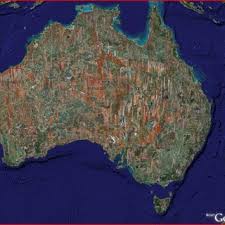MAPCIS Crater:

Australian researchers have uncovered evidence of a massive impact crater which is named as MAPCIS, which could revolutionise our understanding of Earth’s geological history.
- MAPCIS Crater is classified as a nonconcentric complex crater, and could provide invaluable insights into Earth’s geological and biological evolution.
- It spans an astonishing 600 kilometers across central Australia.
- The newly discovered structure, named as Massive Australian Precambrian-Cambrian Impact Structure (MAPCIS).
- The impact is believed to have occurred at the end of the Ediacaran period.
- It includes massive deposits of pseudotachylite breccia (melt rock) near the crater’s center, presence of shocked minerals, including lonsdaleite (shocked diamond), and impact-level concentrations of iridium.
- Ediacaran Period is an interval of geological time ranging 635 to 541 million years ago.
- It is the uppermost division of the Proterozoic Eon of Precambrian time and latest of the three periods of the Neoproterozoic Era.
- This period produced some of the earliest known evidence of the evolution of multicellular animals.
- It was a time of immense geological and biological change, and records the transition from a planet largely dominated by microscopic organisms, to a Cambrian world swarming with animals.




